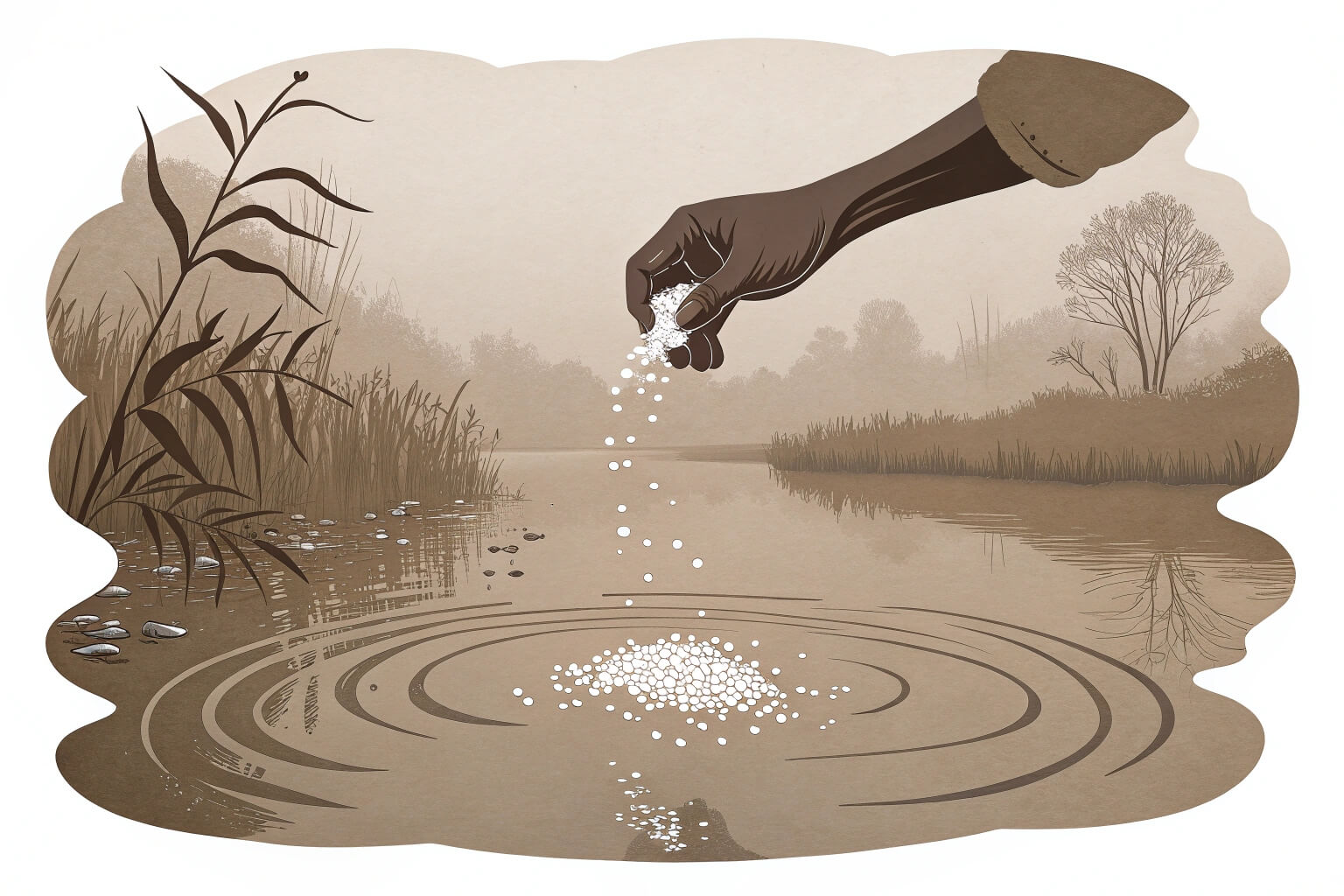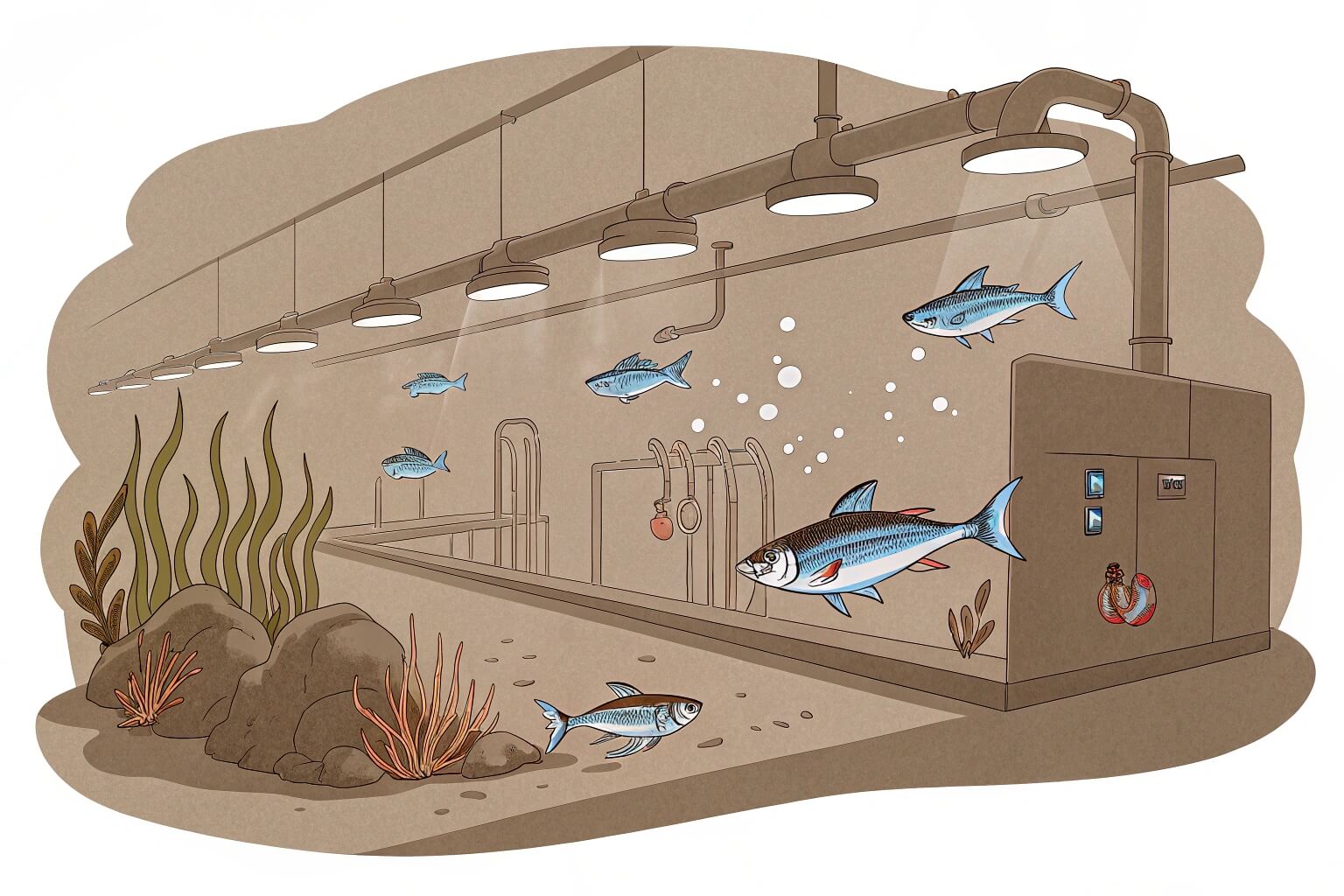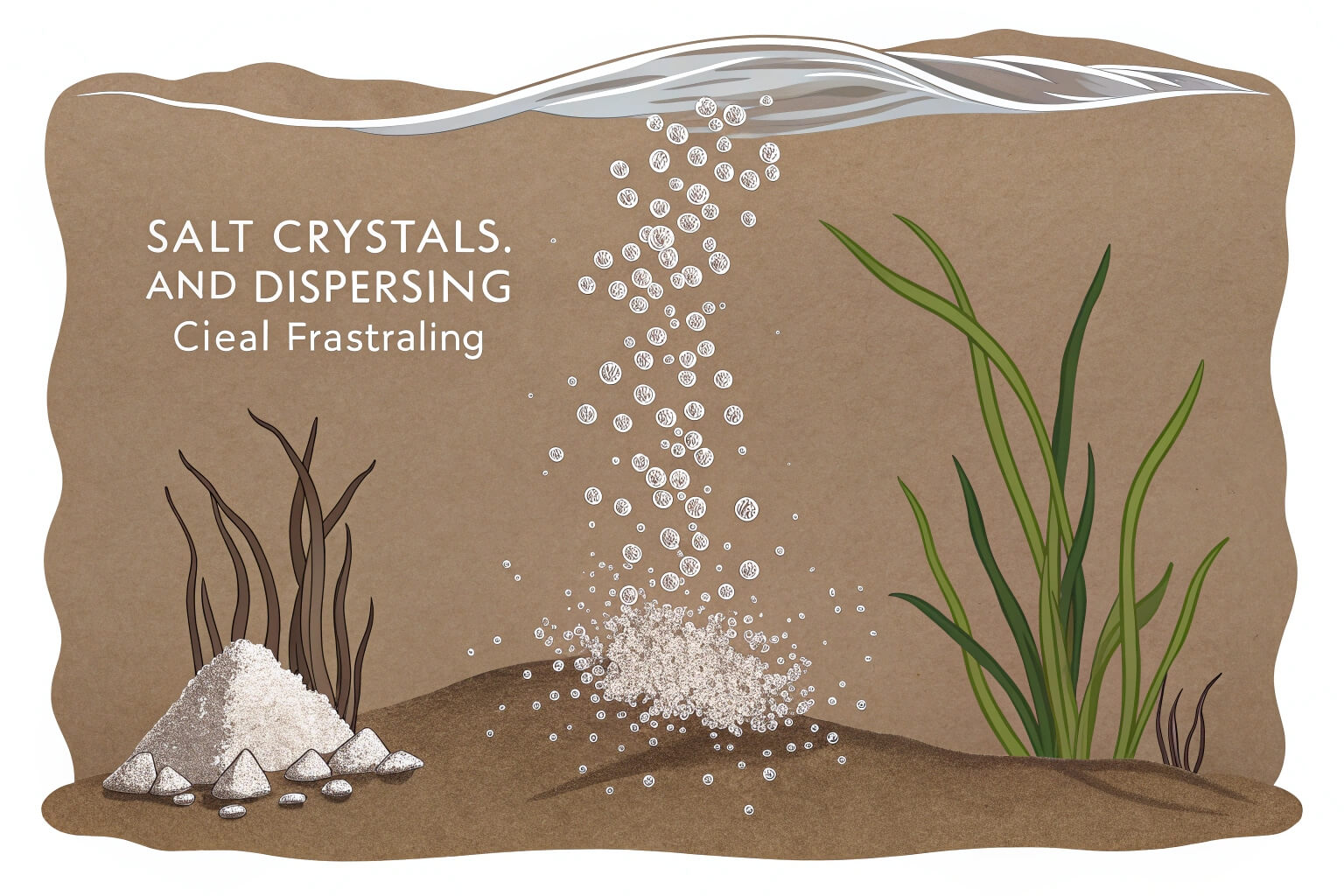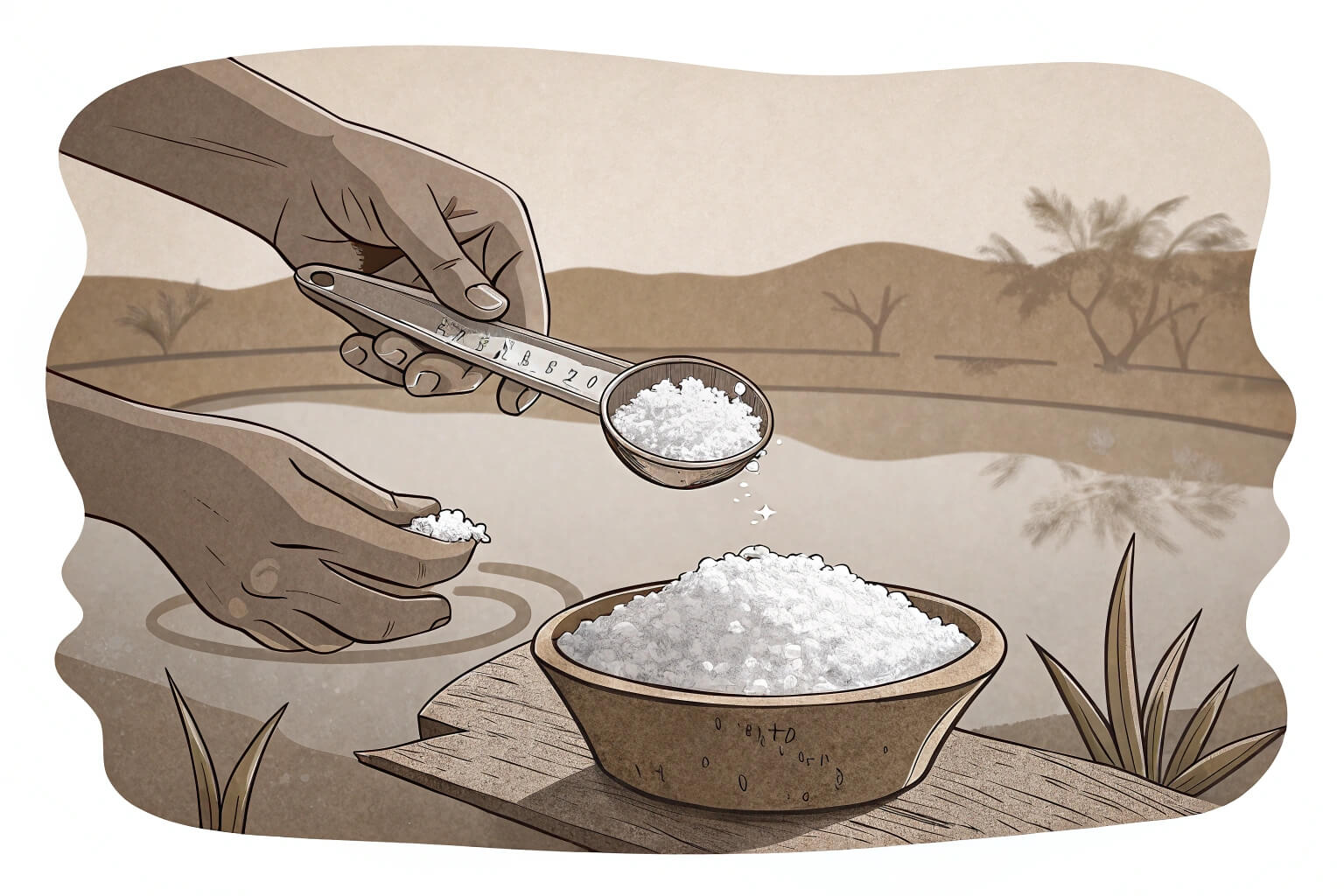Can You Really Farm Sea Fish Just by Adding Salt to a Pond?
Want to raise valuable sea fish far from the coast? Adding salt to a pond seems like an easy fix, but is it really possible? Let's find out.
Simply adding salt to a freshwater pond is not enough to farm saltwater fish successfully. Marine fish need precise, stable salinity levels and specific water conditions that a basic pond cannot provide. Controlled environments are essential.

Trying to make saltwater fish thrive inland presents unique challenges. Many believe it's as simple as mimicking the ocean's saltiness. But there's much more to it than just adding salt. We need to explore what truly makes successful saltwater aquaculture possible, especially for businesses operating away from the sea.
Can you farm raise saltwater fish?
Dreaming of farming high-value saltwater species inland? It might seem complex, but modern aquaculture offers ways to achieve this goal, moving beyond traditional coastal farms.
Yes, you absolutely can farm-raise saltwater fish, even far from the ocean. This is typically done using specialized, controlled systems like tanks or recirculating aquaculture systems (RAS) that carefully manage the water environment.

Raising saltwater fish successfully away from the sea relies heavily on creating and maintaining the right artificial environment. It's not just about salinity; it involves managing a whole range of water parameters critical for the fish's survival and growth. I remember visiting a client in Southeast Asia who initially struggled, thinking salinity was the only factor. We helped them understand the broader picture.
Controlled Environments are Key
The most common method is using Recirculating Aquaculture Systems (RAS)1 or specifically designed tanks. These systems allow precise control over the water. Unlike an open pond, tanks provide a contained space where water quality2 can be monitored and adjusted. For many of our clients, especially small to medium enterprises, flexible and durable solutions like collapsible tanks are ideal. They offer a cost-effective way to set up a controlled environment without massive infrastructure investments. These tanks, especially those made with durable materials and strong seams like our double-welded ones, can hold the necessary saline water reliably.
Managing Water Quality
Saltwater fish are sensitive. You need to constantly monitor and manage salinity (salt concentration), temperature, dissolved oxygen levels, pH, and waste products like ammonia and nitrates. RAS systems continuously filter and treat the water, removing waste and re-oxygenating it before returning it to the fish tanks. This minimizes water usage, which is crucial in many inland areas, and maintains the stable conditions marine species require. Simple ponds lack this level of control, making them unsuitable for most marine fish.
Common Species in Aquaculture
Many popular saltwater species are successfully farmed inland using these controlled methods. Examples include species like Barramundi (Asian Sea Bass)3, certain types of shrimp, grouper, and even species like tilapia that can be adapted to brackish or saltwater conditions. The choice of species often depends on market demand, environmental control capabilities, and the specific technology being used. Success hinges on matching the species' needs with the farm's ability to provide the right environment.
What does adding salt to a pond do?
Thinking about adding salt to your fish pond? Many hear about its benefits, but wonder what changes it actually brings to the water and the fish living there.
Adding salt increases the water's salinity. In small, controlled amounts, it can help freshwater fish by reducing stress and controlling some parasites. However, adding large amounts drastically changes the water chemistry, harming freshwater life.

The idea of using salt in ponds often comes from its known therapeutic properties. But it's crucial to understand the difference between using salt as a targeted treatment for freshwater fish and attempting to create a saltwater environment. The effects vary hugely depending on the amount of salt added and the existing ecosystem.
Limited Benefits for Freshwater Fish
For freshwater fish, a small amount of salt (typically reaching a salinity of 0.1% to 0.3%) can be beneficial in specific situations. It helps reduce osmotic stress4, meaning the fish don't have to work as hard to regulate their internal fluids when stressed or sick. Salt can also kill or inhibit certain external parasites5 and bacteria, acting like a bath treatment6. This is why it's sometimes recommended during disease outbreaks or when introducing new fish. However, this is a temporary measure, not a permanent change to the pond environment.
Dangers of Excess Salt
Adding too much salt, attempting to reach levels suitable for marine fish7 (typically 3.0% to 3.5% salinity), is disastrous for a freshwater ecosystem8. Freshwater plants, beneficial bacteria, invertebrates (like snails and insects), and the fish themselves are adapted to low-salinity water. A sudden or significant increase in salt disrupts their biological functions, damages plant tissues, and can kill off essential parts of the food web. The pond's natural balance is destroyed.
Why It's Not a Marine Environment
Even if you add enough salt to match ocean salinity, a pond environment9 lacks the stability and specific mineral composition of seawater. Ocean salinity is relatively constant, while pond salinity fluctuates wildly with rain and evaporation. Seawater also contains a complex mix of minerals and trace elements vital for marine life, which simple salt (sodium chloride) doesn't provide. Therefore, just adding salt creates salty freshwater, not a true marine habitat.
What happens if you put a saltwater fish into a freshwater pond or lake?
Curious about what happens when fish from different water types mix? Putting a saltwater fish directly into freshwater sounds like a simple experiment, but the consequences are serious.
A saltwater fish placed in a freshwater pond or lake will experience severe osmotic shock and likely die very quickly. Its body cannot handle the sudden lack of salt in the surrounding water.

The biological divide between saltwater and freshwater fish10 is fundamental. Their bodies are designed to function in vastly different environments, specifically regarding how they manage water and salt balance. Ignoring this difference has immediate and fatal results.
Understanding Osmoregulation
Fish, like all animals, need to maintain a stable internal environment. This process is called osmoregulation11. Saltwater fish live in an environment much saltier than their internal fluids. To survive, they constantly drink seawater and actively pump excess salt out through their gills and urine, while conserving water. Freshwater fish face the opposite problem: their environment is much less salty than their bodies. They absorb salt through their gills and produce large amounts of dilute urine to get rid of excess water that passively enters their bodies.
The Shock to the System
When a saltwater fish is suddenly put into freshwater, this finely tuned system collapses. The external environment is now far less salty than the fish's internal fluids. Water rapidly floods into the fish's body through osmosis12, attempting to balance the salt concentration. The fish's kidneys, designed to conserve water, cannot cope with this massive influx. Its cells swell and can even burst. Key organs, especially the kidneys and gills, fail under the strain.
Why Acclimation Fails Here
While some fish species (euryhaline species13 like salmon or tilapia) can tolerate a range of salinities and gradually acclimate between fresh and saltwater, most purely marine fish (stenohaline species14) cannot. The physiological change required is too drastic and happens too quickly. The rapid shift in osmotic pressure causes irreversible damage before the fish has any chance to adapt, leading to death usually within minutes or hours.
How often should I add salt to a fish pond?
Considering using salt in your fish pond for health benefits? Knowing when and how much to add is key, as incorrect usage can cause more harm than good.
For freshwater ponds, salt should only be added occasionally as a specific treatment, not routinely. The frequency and amount depend entirely on diagnosing a problem like parasites or disease, using low concentrations (0.1-0.3%).

Using salt effectively in a freshwater pond means understanding its purpose is therapeutic, not for general maintenance or trying to create a saltwater environment. It’s a tool for specific situations, requiring careful calculation and observation. I often advise clients to think of it like medicine – use it only when needed and exactly as prescribed.
Salt as a Treatment, Not Maintenance
Salt's primary role in freshwater ponds is to help fish during times of stress or illness. It can aid recovery from injuries, reduce the severity of some parasitic infections (like Ich or Costia), and alleviate nitrite toxicity during cycling issues. It is not meant to be present continuously. Routine salting can harm beneficial bacteria, damage aquatic plants, and potentially lead to salt-resistant strains of parasites, making future treatments less effective. Use it only when you identify a specific problem that salt can address.
Calculating the Right Dose
Accuracy is vital. The standard therapeutic dose15 is usually between 1 to 3 pounds of non-iodized salt16 (like pure sodium chloride, often sold as pond salt or water softener salt) per 100 US gallons of water (resulting in 0.1% to 0.3% salinity). You must know your pond's exact volume to calculate the correct amount. Always dissolve the salt in a bucket of pond water before adding it gradually to the pond, preferably near a water return to help it circulate evenly. Never pour salt directly onto fish or plants.
Avoiding Long-Term Salting
Once the issue is resolved (typically after 1-3 weeks), the salt concentration should be gradually reduced through partial water changes17. Salt does not evaporate; it only gets diluted with fresh water. Maintaining even low levels of salt long-term is generally not recommended for most freshwater pond ecosystems. Remember, this practice is strictly for temporary therapeutic use in freshwater systems and has absolutely no relevance to creating a viable environment for saltwater fish.
Conclusion
Farming saltwater fish inland isn't achieved by simply salting a pond. Success requires controlled environments, like specialized tanks, to manage salinity and water quality precisely. Proper equipment and knowledge are essential.
-
Explore how RAS can optimize fish farming by providing precise control over water quality, essential for successful aquaculture. ↩
-
Understanding water quality management is crucial for the health of saltwater fish; discover best practices and techniques. ↩
-
Learn about the specific farming techniques for Barramundi, a popular species in aquaculture, to enhance your fish farming knowledge. ↩
-
Understanding osmotic stress is essential for maintaining fish health and ensuring a balanced pond ecosystem. ↩
-
Learn about the impact of external parasites on fish health and effective treatment options to protect your pond. ↩
-
Explore the concept of bath treatment for fish to effectively manage health issues and improve their well-being. ↩
-
Exploring the differences in salinity tolerance between marine and freshwater fish can enhance your knowledge of aquatic life. ↩
-
Understanding the effects of salt on freshwater ecosystems is crucial for maintaining biodiversity and ecological balance. ↩
-
Learning about the characteristics of a healthy pond environment can help in conservation efforts and maintaining aquatic health. ↩
-
Learn about the fascinating adaptations of freshwater fish that allow them to thrive in low-salinity environments. ↩
-
Understanding osmoregulation is crucial for grasping how fish adapt to their environments. Explore this link for in-depth insights. ↩
-
Understanding osmosis is crucial for grasping how fish adapt to their environments. Explore this link to deepen your knowledge. ↩
-
Euryhaline species showcase remarkable adaptability. Discover their survival strategies and learn how they thrive in diverse environments. ↩
-
Stenohaline species are fascinating due to their strict salinity requirements. Explore their biology to understand their limitations and adaptations. ↩
-
Understanding the therapeutic dose is crucial for effective treatment of fish health issues in ponds. Explore this link for detailed guidelines. ↩
-
Non-iodized salt is essential for fish health. Discover why it's preferred over iodized salt for pond treatments. ↩
-
Learn how partial water changes can effectively manage salt levels in your pond, ensuring a healthy ecosystem for fish. ↩